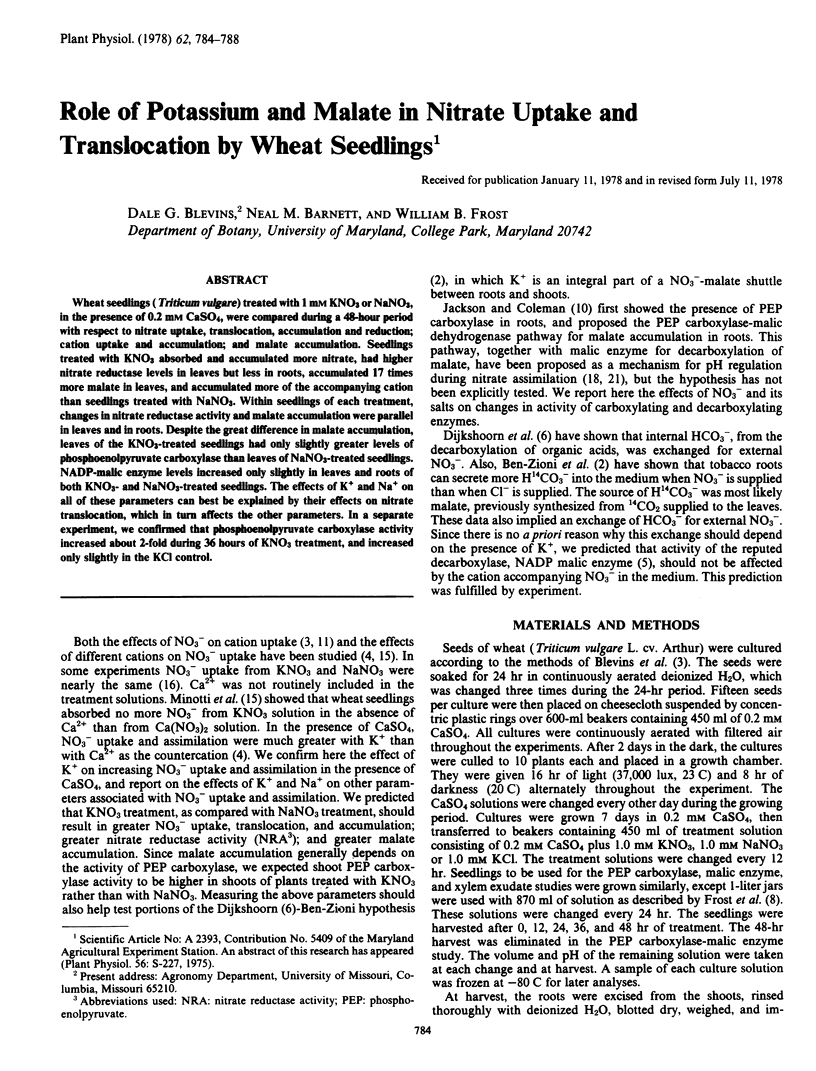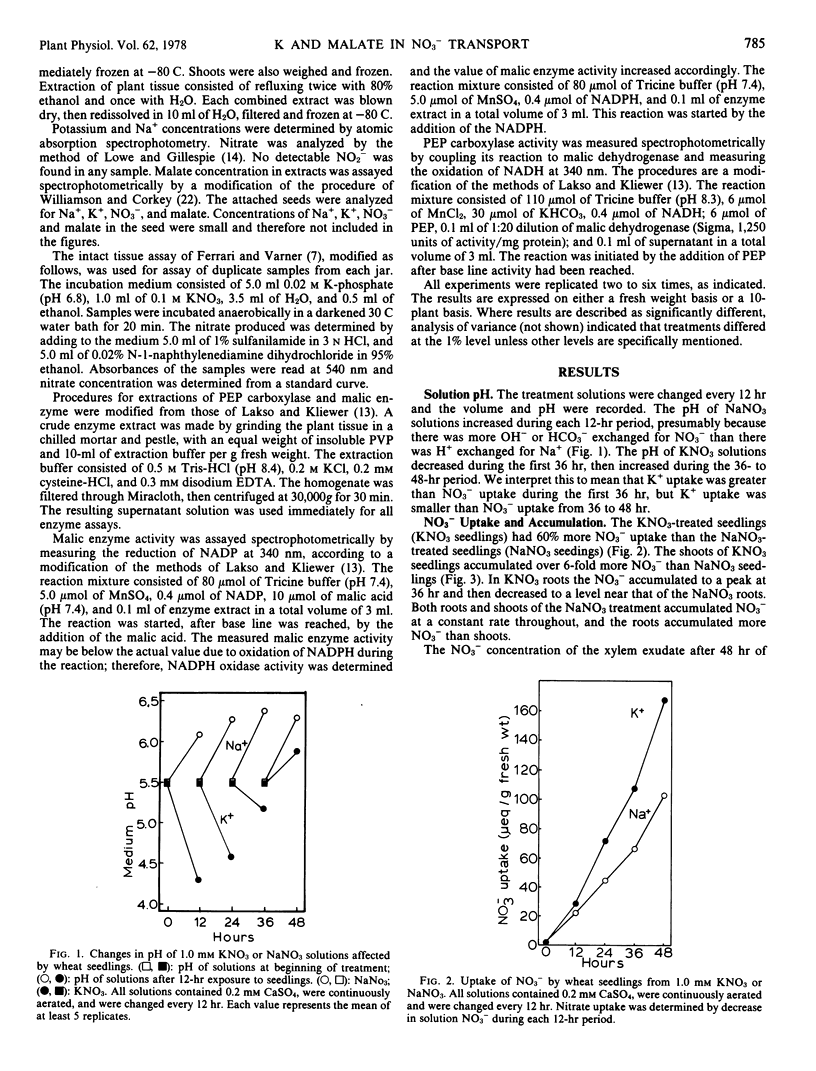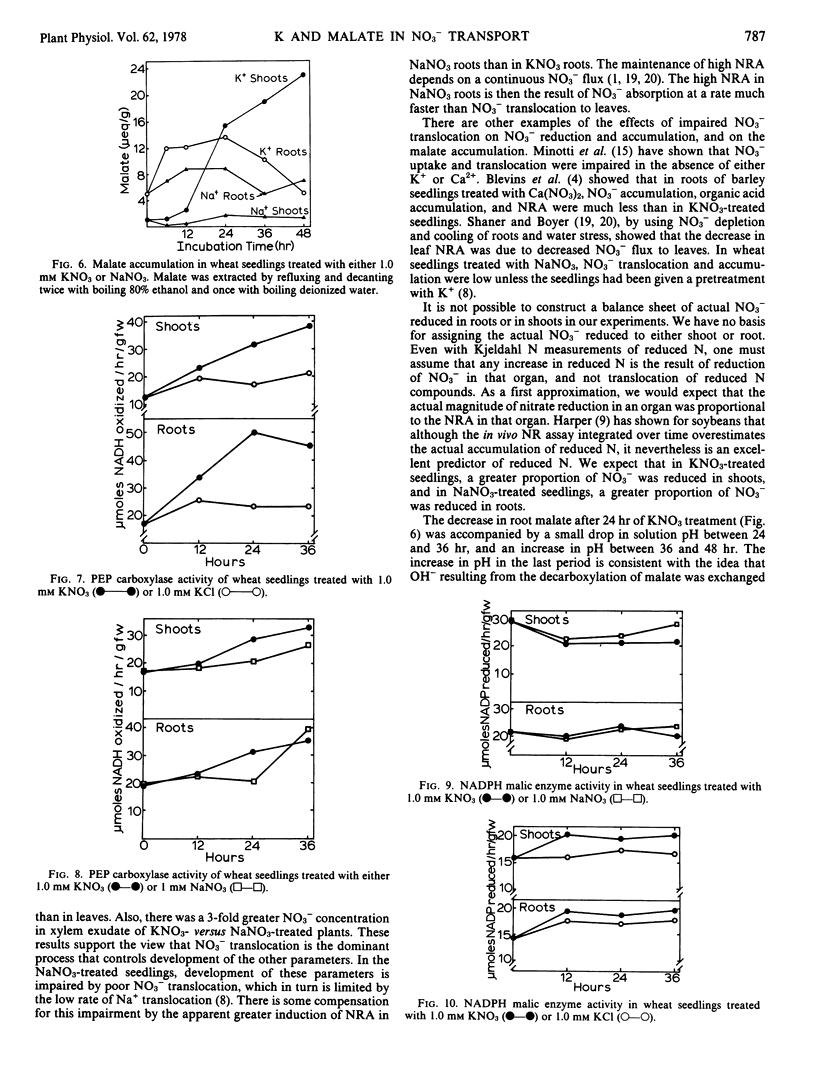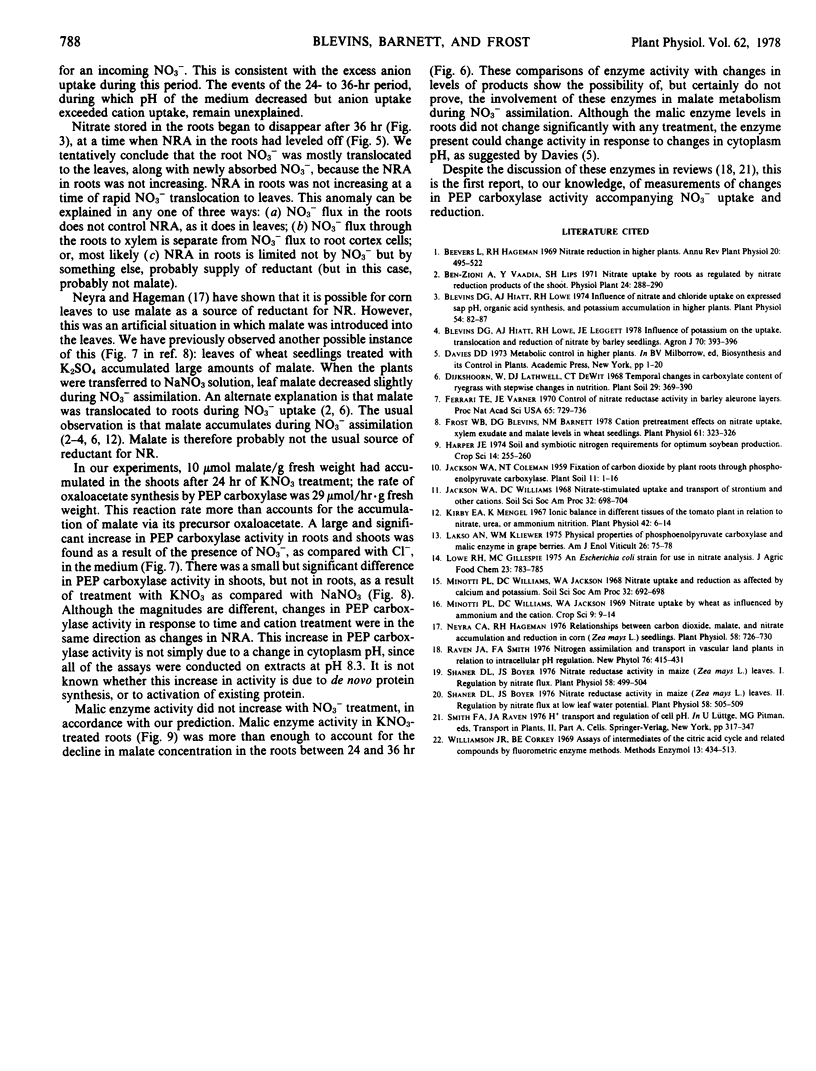Abstract
Wheat seedlings (Triticum vulgare) treated with 1 mm KNO3 or NaNO3, in the presence of 0.2 mm CaSO4, were compared during a 48-hour period with respect to nitrate uptake, translocation, accumulation and reduction; cation uptake and accumulation; and malate accumulation. Seedlings treated with KNO3 absorbed and accumulated more nitrate, had higher nitrate reductase levels in leaves but less in roots, accumulated 17 times more malate in leaves, and accumulated more of the accompanying cation than seedlings treated with NaNO3. Within seedlings of each treatment, changes in nitrate reductase activity and malate accumulation were parallel in leaves and in roots. Despite the great difference in malate accumulation, leaves of the KNO3-treated seedlings had only slightly greater levels of phosphoenolpyruvate carboxylase than leaves of NaNO3-treated seedlings. NADP-malic enzyme levels increased only slightly in leaves and roots of both KNO3- and NaNO3-treated seedlings. The effects of K+ and Na+ on all of these parameters can best be explained by their effects on nitrate translocation, which in turn affects the other parameters. In a separate experiment, we confirmed that phosphoenolpyruvate carboxylase activity increased about 2-fold during 36 hours of KNO3 treatment, and increased only slightly in the KCl control.
Full text
PDF




Selected References
These references are in PubMed. This may not be the complete list of references from this article.
- Blevins D. G., Hiatt A. J., Lowe R. H. The Influence of Nitrate and Chloride Uptake on Expressed Sap pH, Organic Acid Synthesis, and Potassium Accumulation in Higher Plants. Plant Physiol. 1974 Jul;54(1):82–87. doi: 10.1104/pp.54.1.82. [DOI] [PMC free article] [PubMed] [Google Scholar]
- Ferrari T. E., Varner J. E. Control of nitrate reductase activity in barley aleurone layers. Proc Natl Acad Sci U S A. 1970 Mar;65(3):729–736. doi: 10.1073/pnas.65.3.729. [DOI] [PMC free article] [PubMed] [Google Scholar]
- Frost W. B., Blevins D. G., Barnett N. M. Cation pretreatment effects on nitrate uptake, xylem exudate, and malate levels in wheat seedlings. Plant Physiol. 1978 Mar;61(3):323–326. doi: 10.1104/pp.61.3.323. [DOI] [PMC free article] [PubMed] [Google Scholar]
- Kirkby E. A., Mengel K. Ionic balance in different tissues of the tomato plant in relation to nitrate, urea, or ammonium nutrition. Plant Physiol. 1967 Jan;42(1):6–14. doi: 10.1104/pp.42.1.6. [DOI] [PMC free article] [PubMed] [Google Scholar]
- Lowe R. H., Gillespie M. C. An Escherichia coli strain for use in nitrate analysis. J Agric Food Chem. 1975 Jul-Aug;23(4):783–785. doi: 10.1021/jf60200a018. [DOI] [PubMed] [Google Scholar]
- Neyra C. A., Hageman R. H. Relationships between Carbon Dioxide, Malate, and Nitrate Accumulation and Reduction in Corn (Zea mays L.) Seedlings. Plant Physiol. 1976 Dec;58(6):726–730. doi: 10.1104/pp.58.6.726. [DOI] [PMC free article] [PubMed] [Google Scholar]
- Shaner D. L., Boyer J. S. Nitrate Reductase Activity in Maize (Zea mays L.) Leaves: I. Regulation by Nitrate Flux. Plant Physiol. 1976 Oct;58(4):499–504. doi: 10.1104/pp.58.4.499. [DOI] [PMC free article] [PubMed] [Google Scholar]
- Shaner D. L., Boyer J. S. Nitrate Reductase Activity in Maize (Zea mays L.) Leaves: II. Regulation by Nitrate Flux at Low Leaf Water Potential. Plant Physiol. 1976 Oct;58(4):505–509. doi: 10.1104/pp.58.4.505. [DOI] [PMC free article] [PubMed] [Google Scholar]


